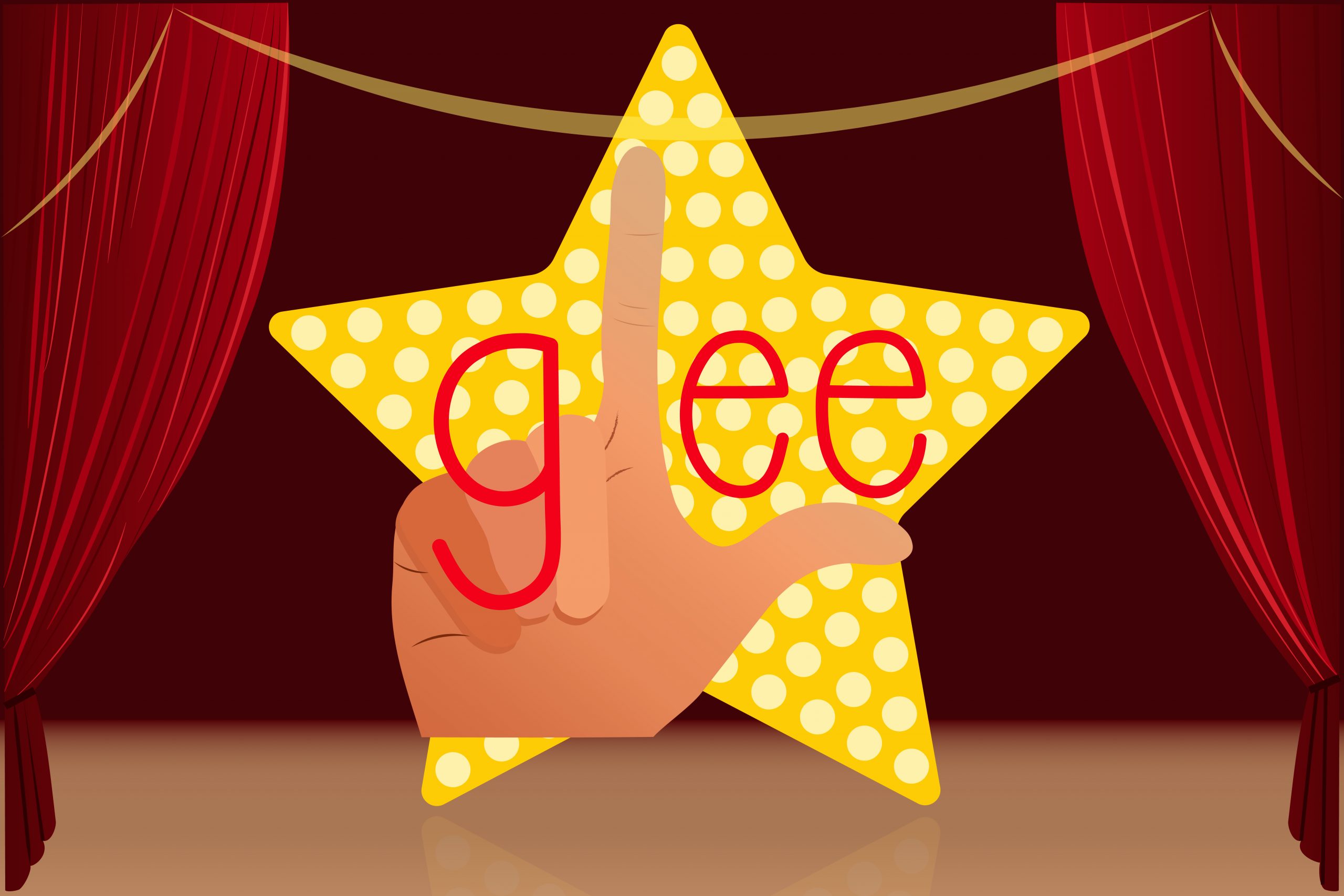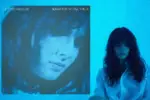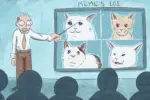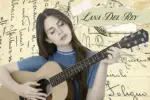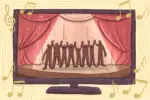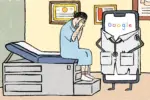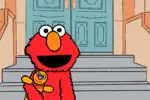A few years ago, I had a conversation with a voice teacher about popular audition songs. Theater, above all else, favors novelty in auditions, so he went through the most cliché pieces one should never use. Number one on this list was “Defying Gravity,” the signature song from the legendary musical “Wicked.” He said that ever since it showed up on the television show “Glee,” everyone has been using it as their audition song. In this instance and many others, “Glee” directly impacts the musical theater landscape, influencing specific trends and the demographics who engage with them.
“Glee” is a Gen Z epic — a foundational text. Its six seasons chart the ever-so-dramatic journeys of the McKinley High glee club, The New Directions, including a complex web of relationships, pregnancy scares and over-the-top musical numbers. For all its ridiculousness, the show is an essential piece of television history. It was progressive for its time, portraying layered queer characters and exploring their lives in nuanced manners.
A groundbreaking aspect less discussed, however, is the impact “Glee” has had on musical theater. The series’s integration of musical numbers in episodes helped catapult musical theater into the teenage zeitgeist.
Broadway is an exclusive medium. It plays host to some of the best American storytelling, musical or otherwise. However, it is often open only to the few who can afford a ticket. These would mainly be older, wealthy individuals. The type of content produced must cater to this demographic. Shows focusing upon adolescents prior to “Glee” were limited, partially due to young people’s lack of accessibility to and interest in the theatrical sphere.
Furthermore, Broadway is an acquired taste. The musical theater sound is vintage, tracing back to composing teams like Rodgers & Hammerstein in the ’30s and ’40s. The medium has seen some spikes in youth popularity. Shows like “Jesus Christ Superstar” and “Rent” brought more contemporary genres like rock to the stage and in turn brought those genres’ fans to the audience. Still, these shows appear more like exceptions rather than the norm. Broadway show tunes remain a narrow field, with the public often writing off musicals as “corny.” However, with the help of “Glee,” the sound and reception of show tunes has changed.
“Glee” is notable for its novelty. Every episode hinges upon song covers reconfigured to meet the cast’s specific crisis. The covers are often of pop songs, each performance a kitsch time capsule of the aughts. These covers were the backbone of the show’s revenue, performing well on the pop charts. Rarely before had a show mixed storytelling and song to such a degree — a true TV musical.
The songs included many show tunes integrated with the more mainstream numbers. In one episode, you would find a character singing Britney Spears only to be followed by a medley from “The Rocky Horror Show.” Music was just music, with multiple genres co-existing for better or worse. The average youth watching for Britney will also be introduced to “The Rocky Horror Show.”
The juxtaposition of theater and pop was so indiscriminate that the two genres would become indistinguishable. For example, in Season 5, the character Santana Lopez opposes Rachel Berry in an audition by performing a pop remix of Rachel’s signature number, “Don’t Rain On My Parade” from the show “Funny Girl.” It features a classic diva belt but is interspersed with vocals taken from some pop ballad. It is not the traditional “boomer” record, but it’s also not a “zoomer” stream. Theater here is a part of pop, and pop is a part of theater. The two spaces co-exist in the show and thus in the minds of audiences.
“Glee” also used musical theater for emotional resonance, representing key aspects of the characters’ lives. The main protagonist — and occasional antagonist — of the show is Rachel Berry, a high schooler with a dream for the Broadway stage. With a disquietingly chirpy demeanor and an ambitious mindset ranging from earnest to insufferable, her journey resonates with many theater kids. She and her fellow thespian, Kurt, endured everyday teenage angst that was scored by Broadway tunes like, of course, “Defying Gravity.” Broadway is now relatable, reconfigured for a teenage mindset.
Through “Glee,” musical theater entered the general discourse, and significant implications soon followed. Dubbed the “Glee Effect,” enrollment in show choir and school theater programs skyrocketed due to the show’s popularity. This impact served as a rallying cry for funding arts programs. The community found among The New Directions could resonate throughout the country. It helped alleviate the stigma surrounding the stage, which now had a younger audience ready to digest and participate. How did the stage respond?
The surge in teen interest in theater has impacted the type of storytelling found on Broadway. Nowadays, the most popular shows center around teenage subjects. “Dear Evan Hansen” premiered in 2016 to critical acclaim and box office success. Songs accentuate its dramatic storytelling in a similar manner to “Glee.” Classic showstoppers portray everyday struggles like anxiety attacks and unrequited love. Modern musical comedies like “Be More Chill” and “Mean Girls” are set in high school and offer ridiculous scenarios not far off from your typical Rachel Berry escapade.
Furthermore, “Glee” has influenced the sound of modern musical theater. The old-fashioned brass of the “golden age” has faded away over time as the default Broadway sound. It has been replaced by modern instrumentals, likely trying to emulate pop music. Upbeat guitars and poppy vocals have “Mean Girls” sound more like Ariana Grande than Cole Porter. Newer composers like Sara Bareilles, who wrote the score to 2016’s “Waitress,” bring their pop backgrounds with them. “Glee” helped initiate this shift. As stated prior, “Glee” allowed pop and theater to exist in the same arena. The two form an amorphous genre that is willing to subvert elements of both, like Santana’s updated cover of a Streisand standard. This amorphous genre carries over with both audiences and the shows they go to see.
Of course, the influence of “Glee” is in a state of decline. The relationship between adolescents and Broadway is as strong as ever, but the discourse on “Glee” has gone from respect to rejection. Audiences have criticized the show’s many problematic elements and have lampooned its most ridiculous. The show’s status as an introduction for today’s theater generation is now accredited to the newest Broadway hits and even other television shows, such as “Riverdale” and its campy musical episodes or “High School Musical: The Musical: The Series” and its show tune-driven storytelling. However, one must still provide credit to the phenomenon that allowed these properties to exist in the first place.
Former “Glee” showrunner Ryan Murphy pitched to his fans a hypothetical reboot of the show, starring Rachel Berry herself, Lea Michele, and new stars like Ben Platt and Beanie Feldstein. The justifications for this remake’s existence prove limited, but the results could be fascinating. What space could “Glee” possibly occupy in the 2020s? The room it inhabited a decade ago was all its own, a realm that sparked a generation’s longstanding love for Broadway. Could such a spark ever be recaptured?


